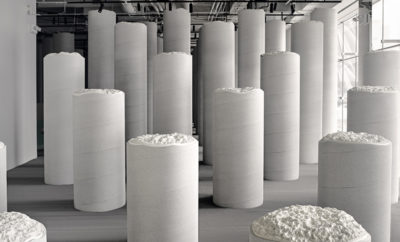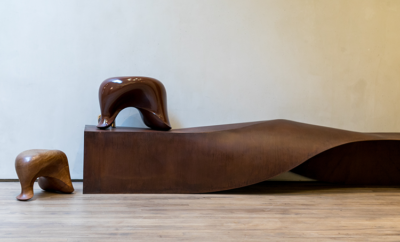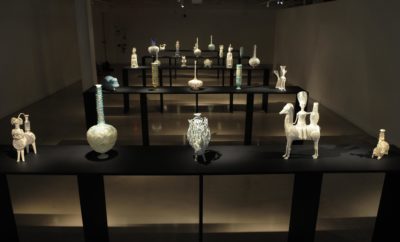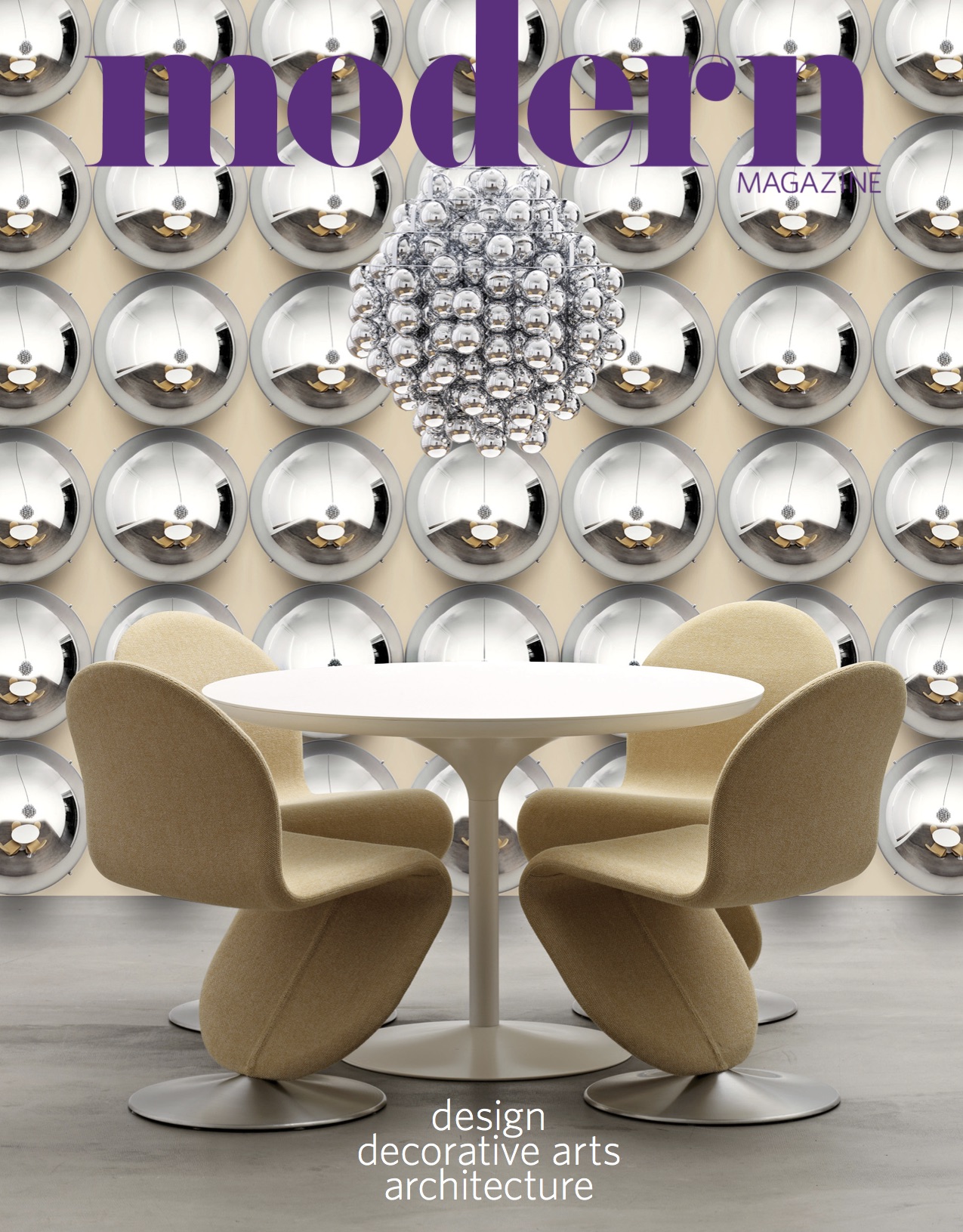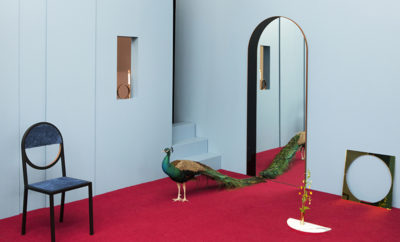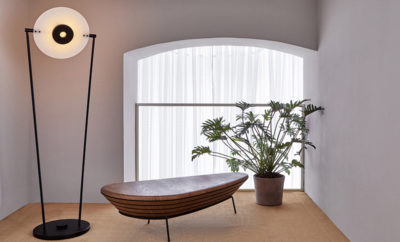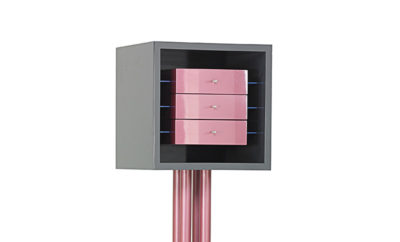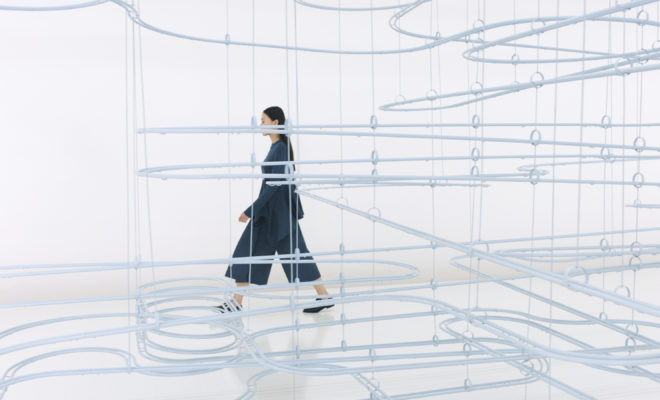 All images courtesy COS.
All images courtesy COS.
Exhibition
Marbles that lose themselves
A new work by Brooklyn–based design studio Snarkitecture appeals to our childhood memory of play by reinventing the marble run as a work of art. The installation unleashes 100,000 white glass balls along 400 meters of sloped track that bends through a gallery in a series of whimsical loops. The performative sequence, titled Loop, and commissioned by clothing store COS, unfolds over the course of the next week at the Gana Arts Centre, a contemporary art space on a mountainside in the South Korean capital of Seoul.
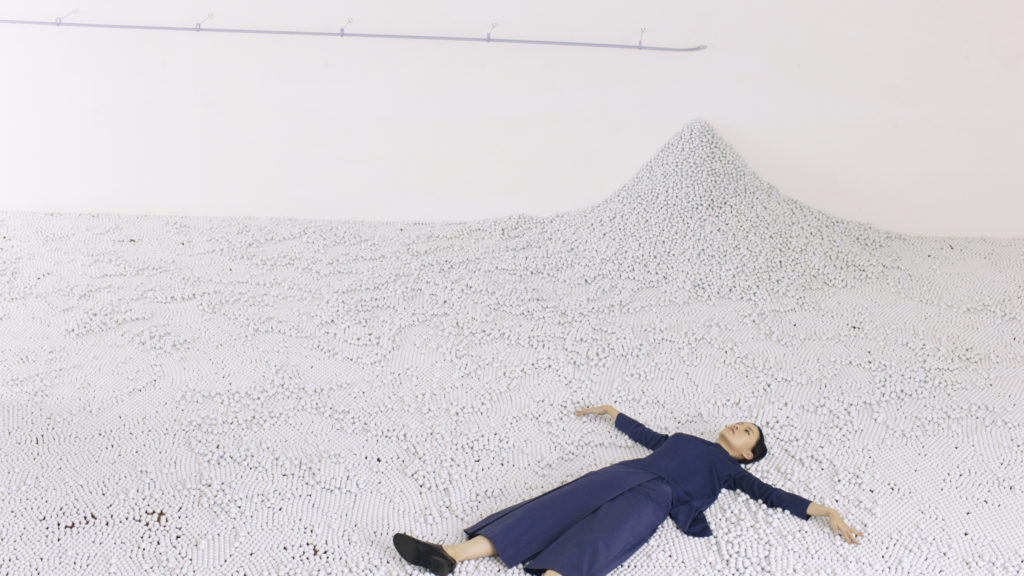
An installation shot of Loop by Snarkitecture.
The installation’s light blue aluminum track is brought to life by the steady flow of the marbles, which are introduced one by one every 5 seconds and collectively generate a calming hum. The smooth, glass surface of each one rolls along the tracks at a very gradual declension, until it finally disappears to an unknown place through a hole in the ground, only to pop into the adjoining space. The marbles reemerge through the wall and fall to the ground to join a glistening marble stream that will amass, over the course of the exhibition, into a plentiful snow-like heap. The entire process is facilitated by a concealed mechanism that is driven only by gravity.
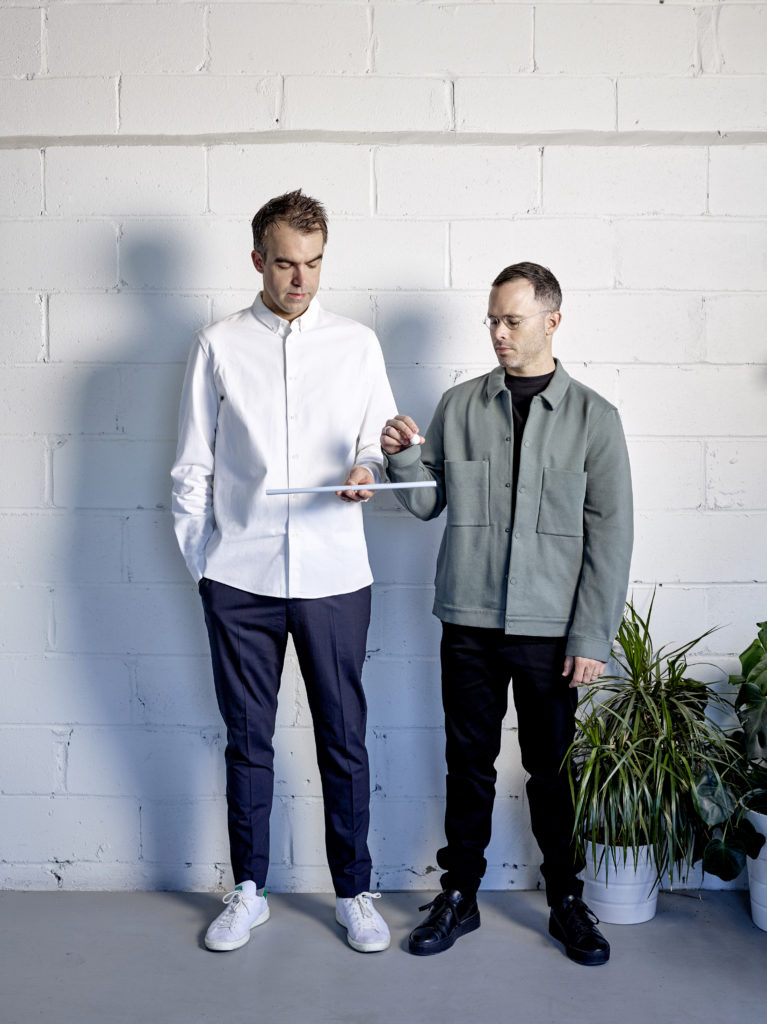
Alex Mustonen and Daniel Arsham, the duo comprising Snarkitecture.
Last year, the duo behind Snarkitecture, Alex Mustonen and Daniel Arsham, created a 10,000-square-foot park filled with white balls at the National Building Museum in Washington D.C., titled The Beach. The nostalgia of childhood fun that it invoked is not dissimilar to the playfulness of this latest work. Known for producing installations that reinterpret everyday environments, their practice encourages people to engage with their spatial surroundings in new ways by designing what Mustonen calls “unexpected, memorable environments and spaces.”
“The project started with the sphere, the glass marble, and the idea of the marble as a children’s toy associated with play and games,” says Mustonen. “But in this abstract environment, in an art gallery, it is presented as a kind of sculptural object floating off in the space.” And this is evident to the viewer: the marble has a trajectory route through the exhibition, but there is also an element of unpredictability. Although it is guided by a set of tracks, it finally overflows into the second room, where it dissolves into a less defined and more liquid state.
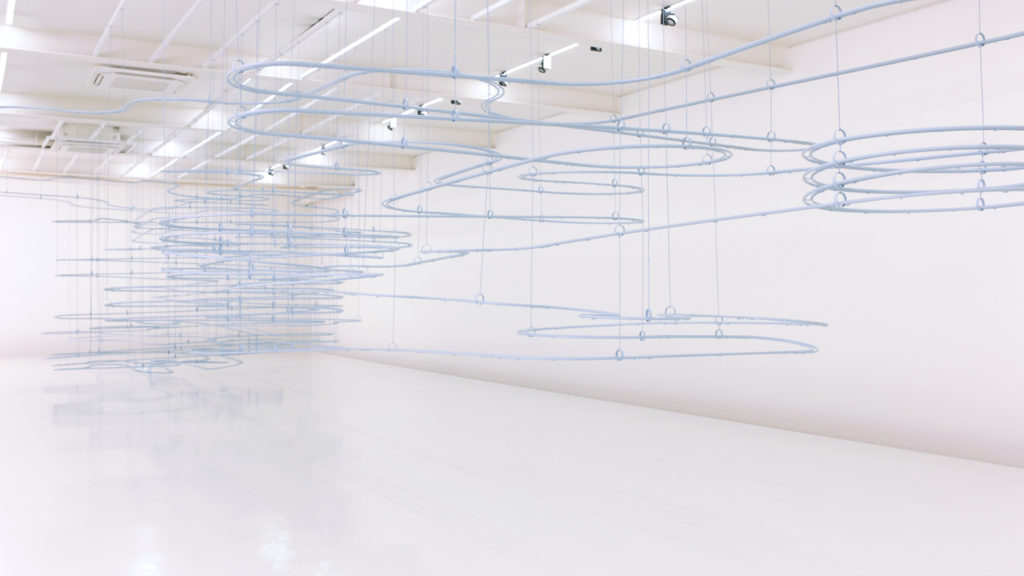
An installation shot of Loop by Snarkitecture.
Like much of Snarkitecture’s work, this installation sits between disciplines. As well as being an artistic intervention, it is an interrogation of the way we perceive and experience our surroundings. “A lot of our work is architecturally driven but we are also operating on the periphery: between art and architecture,” says Mustonen.
The sheer number of marbles involved turns them into more than just objects of play. “Our interest is in how the marbles can act and we think about them as an architectural material: a hundred thousand of them being brought together creates a kind of volume or mass,” Mustonen explains, “and seeing how the spheres overtake the white room in a flood of white is suggestive of the liquid condition of architecture.” The notion of the tangibility and intangibility of architecture is also reflected in the contrast between the set parameters of the still grid and the module of the track versus the sinuous movement of the marbles.
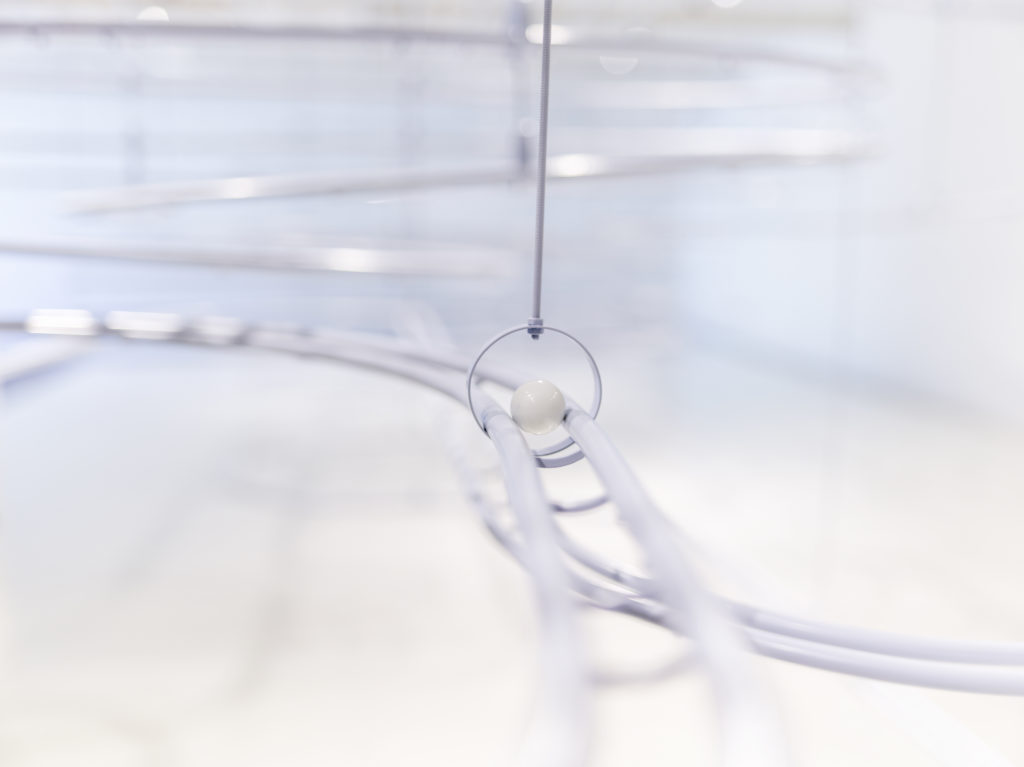
An installation shot of Loop by Snarkitecture.
Snarkitecture has worked with British fashion brand COS twice before: once in 2015 to create an installation at Salone del Mobile in Milan and later that same year to produce a pop-up retail space in downtown LA. COS chose Seoul as the location for this latest commission because of the positive response the brand has received to its stores in the South Korean market, which now number nine. Although COS commissioned Snarkitecture carte blanche, Mustonen says that the artistic approach to this installation was inspired by the brand’s emphasis on the technical lines in its clothing and the shade of light blue used in its latest collection.
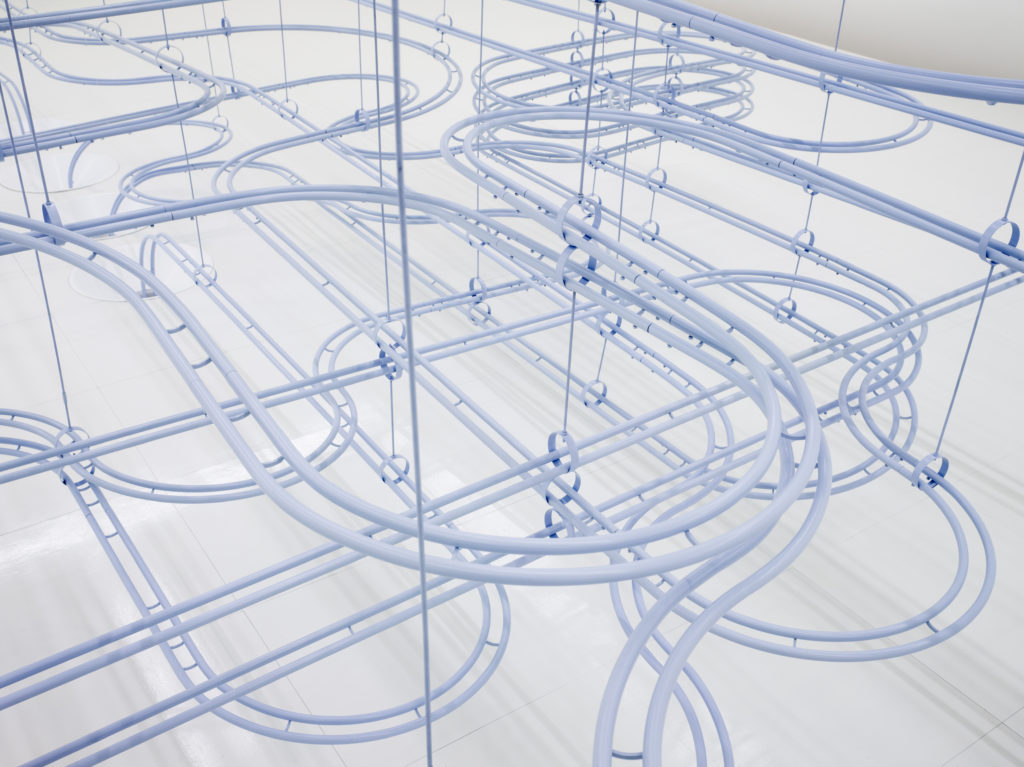
An installation shot of Loop by Snarkitecture.
“The space keeps dripping, filling, and asks: Will the supply of marbles ever run out?” explains Mustonen, who clearly wants to intrigue the observer. The name Snarkitecture comes from Lewis Carroll’s The Hunting of the Snark, a poem describing a voyage in search of an inconceivable creature. To find out the fate of the 100,000 white marbles set on their own voyage, you may have to go and see them snake through the exhibition space more than just once.
Loop is showing at Gana Art Centre in Seoul, South Korea from 8 to 19 November 2017. Visitor information can be found at: http://www.ganaart.com


